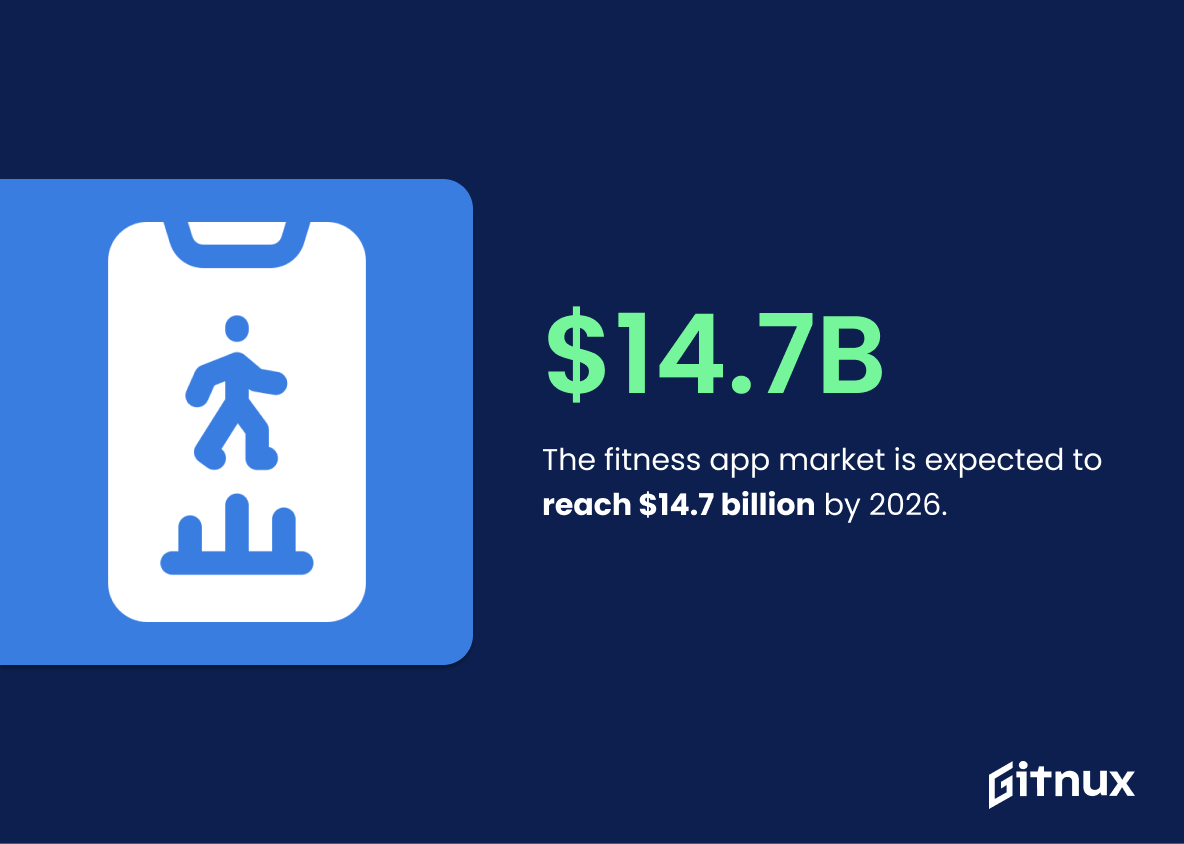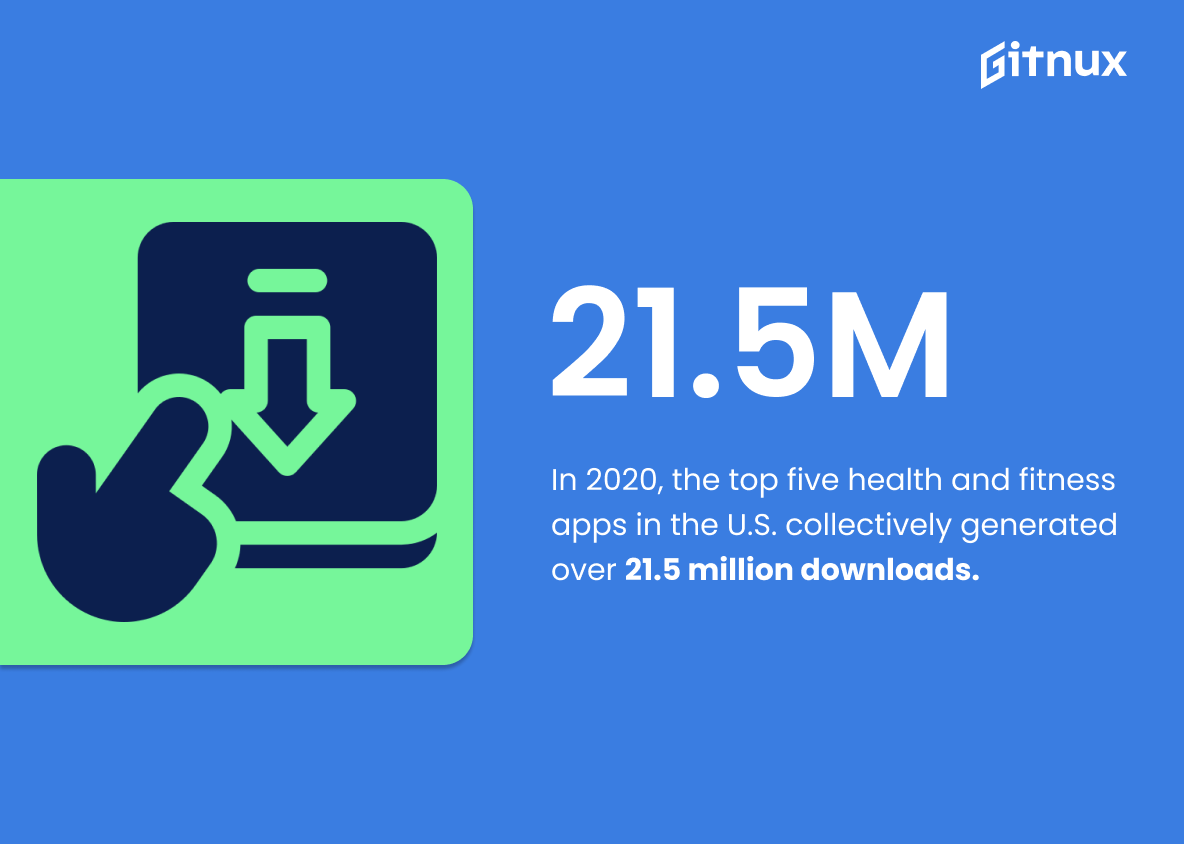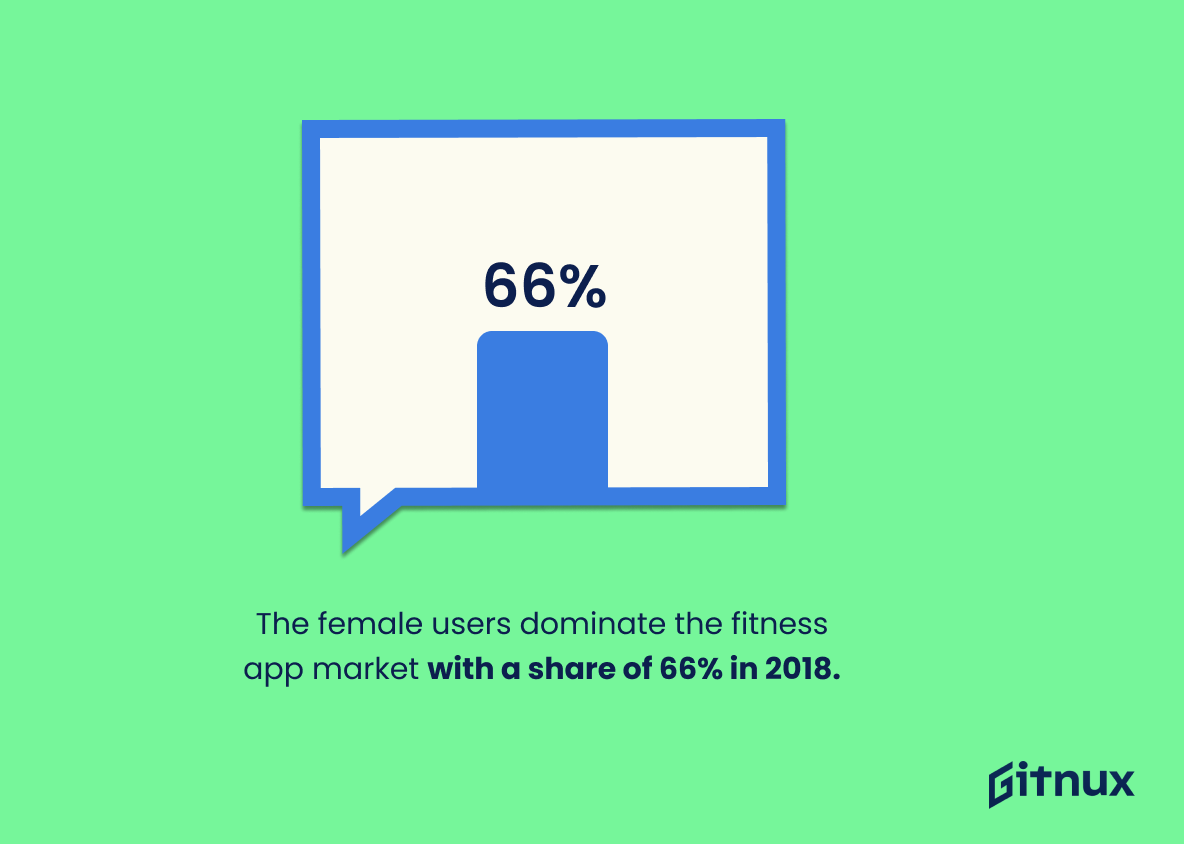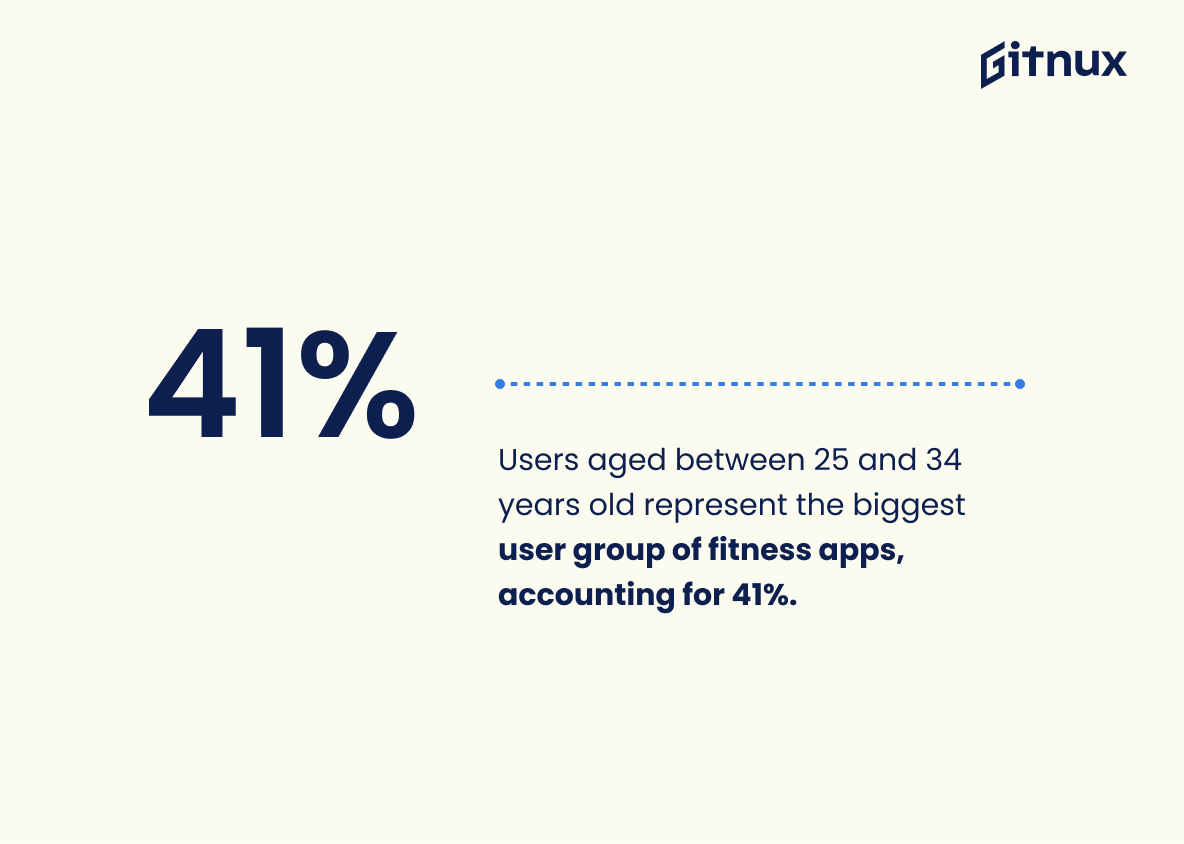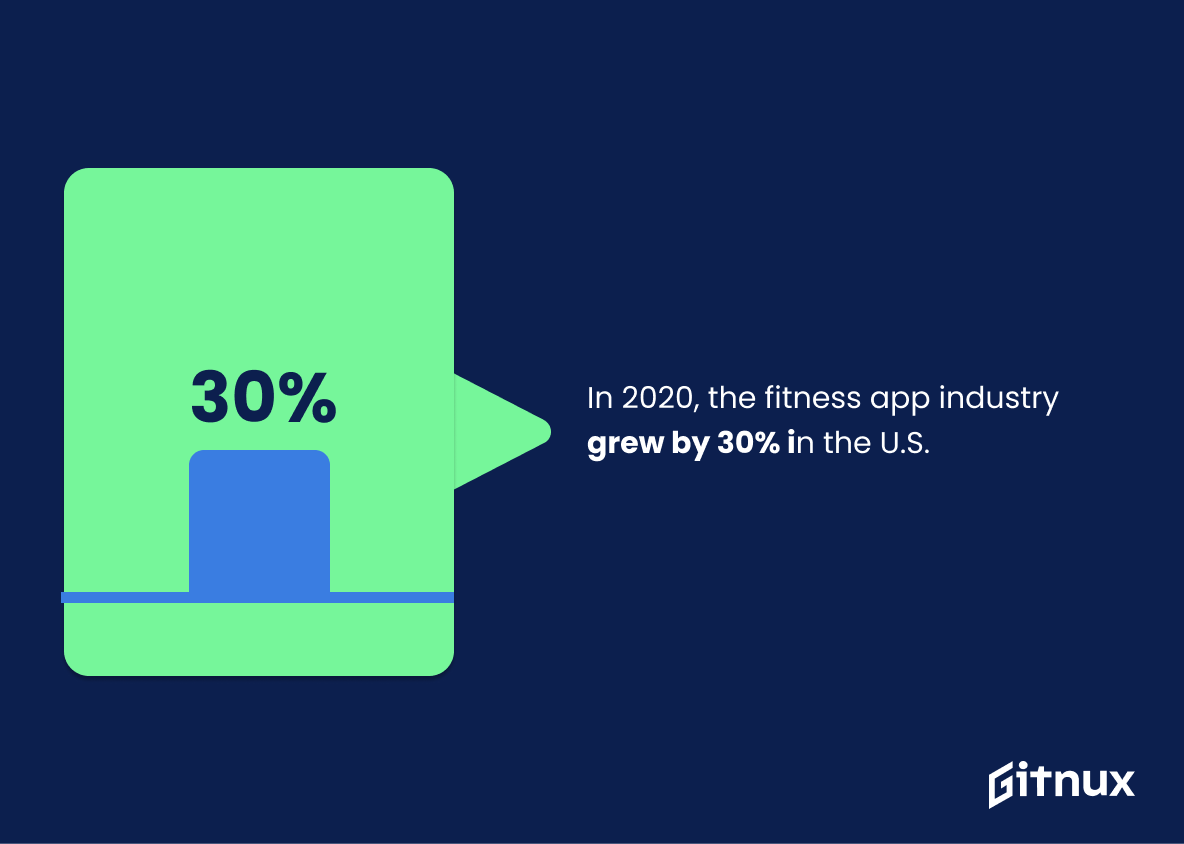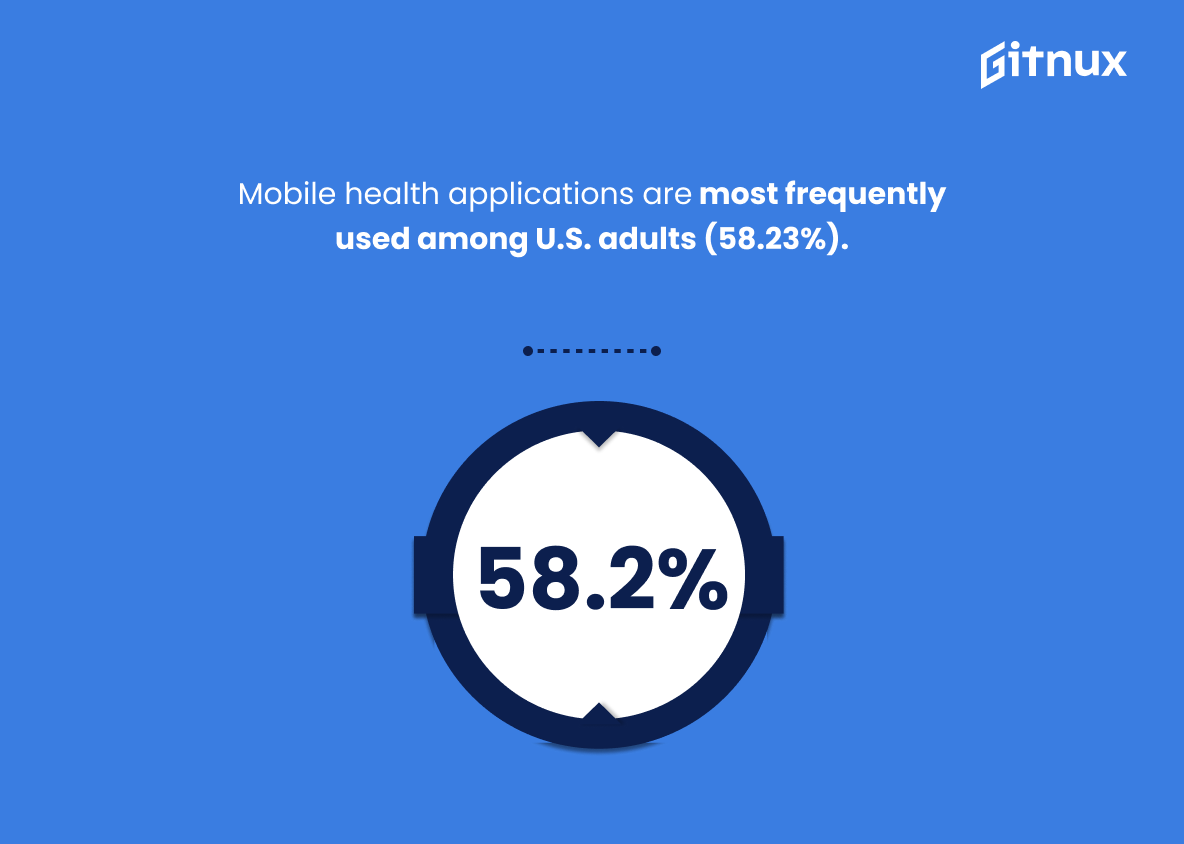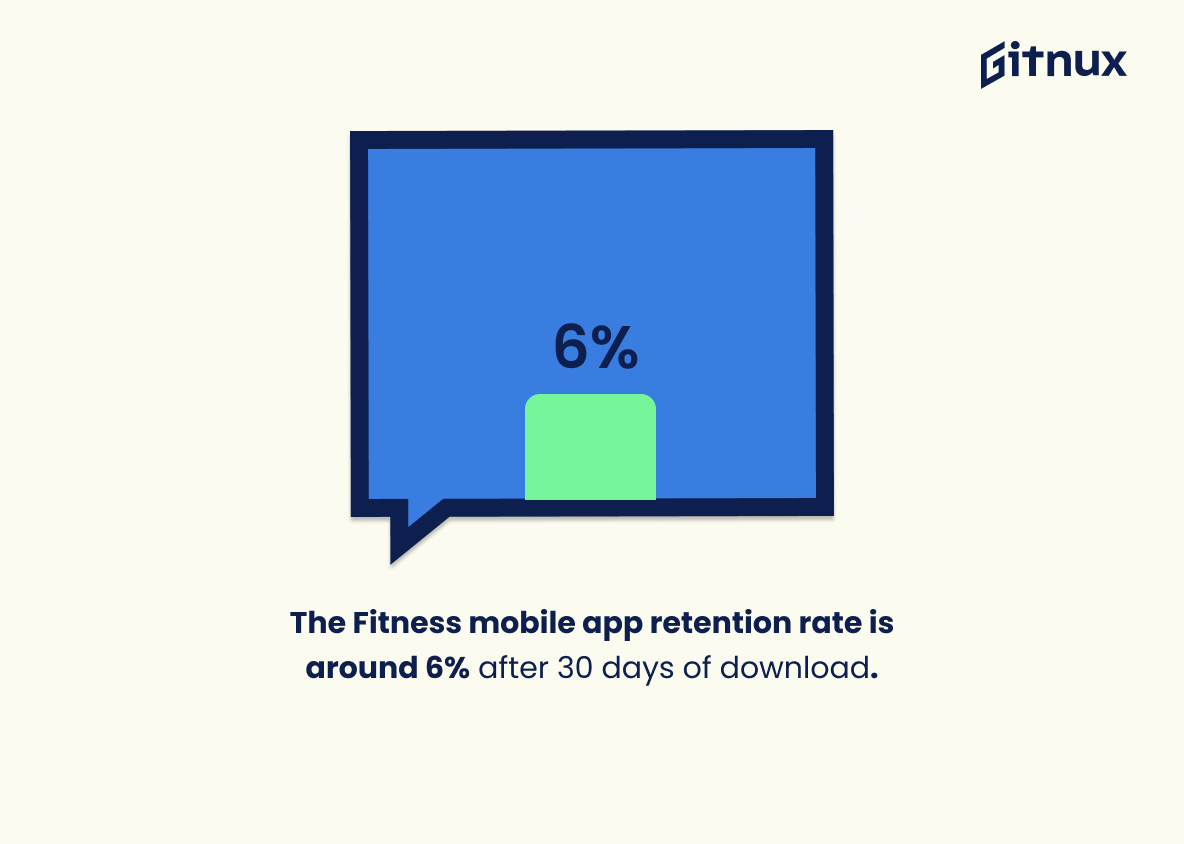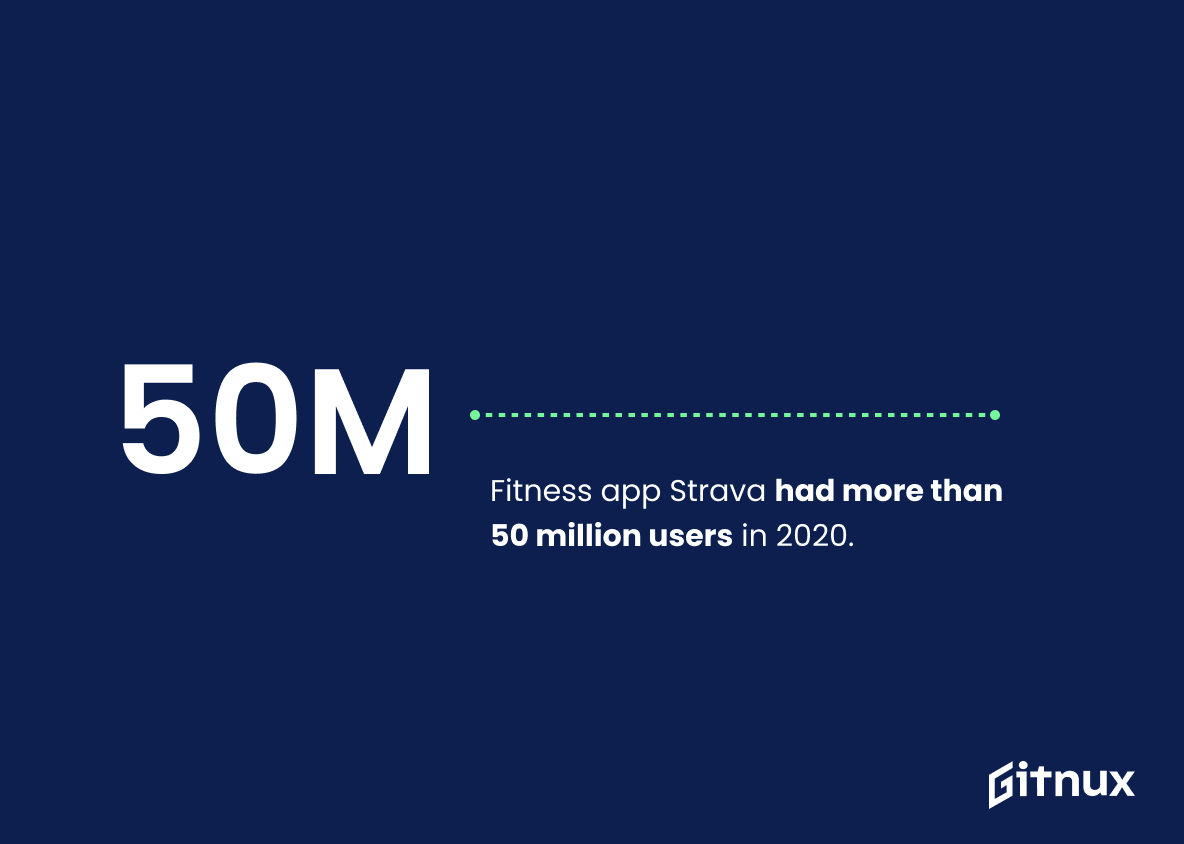Driving a revolution in personal fitness, smartphone applications have transformed workout regimes and health management, making gym memberships and personal trainers almost obsolete for some. The booming fitness app industry is a fascinating mix of creativity, technology, and healthy living, propelling individuals towards their fitness goals, irrespective of their location or schedule.
This blog post delves into the intriguing world of fitness app industry statistics – an analytical exploration revealing the industry’s size, user demographics, market trends, and the key players shaping this thriving digital landscape. As you read, prepare to discover the amazing impact of fitness apps on our everyday lives and the burgeoning opportunities they present for businesses.
The Latest Fitness App Industry Statistics Unveiled
The fitness app market is expected to reach $14.7 billion by 2026.
Foreseeing the whopping ascent to $14.7 billion in the fitness app market by 2026 gives us an aerodynamic perspective of how this industry is not just growing, but speedily sprinting towards a more digitally-inclined future. In the marathon of app industries, the Fitness App sector is clearly turning heads and leading the pack. Your heartbeat might increase as you grab your dumbbells, and so does the industry’s pulse with this exciting financial projection.
This mammoth numeric evidence reflects the consumers’ growing zeal for a healthy lifestyle blended with technology, pointing towards a potential gold mine for innovators and investors tuning in to the fitness frequency. Indeed, highlighting such a significant statistic in a blog post about Fitness App Industry Statistics could create an infectious energy of optimism and innovation around the fitness app industry, driving readers to explore, invest and innovate.
About 56% of active users access their fitness apps more than 10 times a week.
Unveiling the vitality of this statistic, we plunge into the heart of user engagement within the Fitness App Industry. Captivatingly, over half – 56% in fact – of active users consult their fitness apps over 10 times weekly. This mesmerizing figure not only highlights the high degree of user engagement but also suggests how ingrained these applications are in assisting daily health routines of consumers.
The crescendoing rate of app usage signifies opportunities for app developers to introduce new features, innovations, and monetization strategies, while the market researchers can leverage this to understand user behaviors better. Equally important, it helps advertisers target their audience precisely, thereby driving and enhancing economic growth in the industry. This data acts as a siren’s song, drawing attention to the potential for profound growth and investment within this robust and dynamic sphere.
In 2020, fitness apps saw a 46% increase in downloads worldwide due to the COVID-19 pandemic.
Recognizing the meteoric rise in fitness app downloads underlines a pivotal shift in consumer behavior precipitated by the COVID-19 pandemic. An increase of 46% in downloads globally suggests that amidst travel restrictions and gym closures, individuals turned to digital platforms for their fitness routines, affirming that technological adaptations within the fitness sector have become significantly prevalent.
This unexpected surge births an enhanced understanding of the market landscape, empowering app developers to strategize better for future scenarios, reinvent their business models, and generate innovative solutions that align with changing consumer preferences. Such a substantial change captures the pulse of the industry’s evolution – a vital insight for anyone keeping a close eye on fitness app industry statistics.
Over 75% of active fitness app users open the app at least two times a day.
Presenting this statistic brings to light a compelling aspect of user engagement in the fitness app industry. The frequency of active users opening an app multiple times a day signifies a highly entrenched habit. This robust interaction reveals both a commitment to fitness goals and a dependency on these apps for motivation or monitoring, reflecting the efficacy and indispensability of such apps.
Hence, this statistic serves as a valuable testimony to potential investors or new entrants, instilling confidence in the industry’s growth potential. Additionally, for the developers, it could drive the design of push notifications and app content updates to maintain this high user engagement.
As of 2020, MyFitnessPal was the most popular health and fitness app in the U.S. with 19.1 million active users.
Shedding light on the Fitness App Industry with tangible data, the striking figure of MyFitnessPal leading the vanguard with 19.1 million active users as of 2020, underlines its prominence in the U.S. market. From a kaleidoscopic perspective, this notable user base accentuates the app’s pull factor and its successful user-engagement strategies.
Manifestly, this data point helms a pivotal role in understanding market leaders, user preferences, and potential growth areas within the Fitness App Industry. Moreover, such astute preeminence sets a benchmark for new entrants to the market and offers a profound insight into the potential scope for innovation and personalization in health and fitness apps.
In 2020, the top five health and fitness apps in the U.S. collectively generated over 21.5 million downloads.
Peering into these intriguing numbers reveals a flourishing and robust market for health and fitness apps in the United States. The colossal figure of 21.5 million downloads for just the front-running five apps in 2020 indicates a vibrant demand, which speaks volumes about consumer behaviour and investment potential.
Such a dramatic surge in downloads can be attributed to an increasing awareness and orientation towards health and fitness, possibly intensified by the global pandemic’s circumstances. Therefore, the showcase of this statistic fuels a comprehensive understanding of the fitness app industry’s dynamic landscape, the player’s competitive edge, and the consumer preferences shaping the market trends.
The female users dominate the fitness app market with a share of 66% in 2018.
Highlighting the strong 66% representation of females in the fitness app market in 2018 underscores a pivotal shift towards digital wellness tools among women. This demographic tilt not only portrays the evolving fitness inclination of modern women, but also suggests untapped areas of opportunities for app developers to innovate and cater to unique fitness needs, preferences and behaviors of this predominant user base. Therefore, for stakeholders, recognizing this trend can serve as a compass guiding their strategic decisions in design, marketing and user experience within the Fitness App ecosystem.
Users aged between 25 and 34 years old represent the biggest user group of fitness apps, accounting for 41%.
Highlighting the fact that users aged between 25 and 34 years old constitute the largest group leveraging fitness apps, at a substantial 41%, provides a pinpointed insight into the core demographic steering the Fitness App Industry. Notably, this casts a light on the age group that developers, marketers, and stakeholders should primarily target to optimize engagement and returns.
Furthermore, it underscores the prevailing health-consciousness trends among the younger generation, potentially inspiring enhanced features, tailored programs, and innovative strategies to meet the unique fitness aspirations and lifestyle choices of this age cohort.
In 2020, the fitness app industry grew by 30% in the U.S.
In the realm of Fitness App Industry Statistics, our attention is drawn to a notable surge – a robust 30% growth in the industry experienced in 2020, within the U.S. This not only signifies the burgeoning interest individuals have in monitoring and enhancing their physical wellbeing, but also denotes a zeitgeist shift towards technological reliance in fitness pursuits.
The domino effect of this uptick can be seen in everything from rising competition among app developers to increased investments in the industry. Thus, encapsulating such a pivotal time of growth, this statistic offers a key lens through which we can view and anticipate patterns within the fitness app landscape.
Mobile health applications are most frequently used among U.S. adults (58.23%).
Unveiling a compelling insight like “58.23% of U.S. adults regularly utilize mobile health applications” delivers a pulse-pounding implication for anyone examining the fitness app industry’s profile. Not only does it underscore the impressive breadth of adoption across a broad demographic, but it also showcases the immense potential for growth and expansion in the multi-billion dollar app market.
Far from being a secondary or niche market, this data suggests that fitness apps have permeated mainstream consciousness and have become a standard tool in the pursuit of wellness and fitness among adults in U.S. This revelation indeed becomes a crucial perspective for entrepreneurs, app developers, and investors, indicating a promising and fertile ground for both innovation and reasonably rewarding investment.
According to Google Trends, fitness app searches increased by 65% during COVID-19 lockdowns.
Undeniably, the rise of fitness app searches by a whopping 65% during COVID-19 lockdowns presents a transformative event for the Fitness App Industry. This robust surge, recorded by none other than Google Trends, validates the fact that social distancing and stay-at-home protocols not only accelerated the digital fitness revolution but also steered a significant amount of attention towards home workouts and health consciousness.
This pivotal shift provides an opportunity for fitness app developers, marketers, and industry strategists to seize this e-fitness wave, tune their strategies, and help users navigate this new normal. In conclusion, the cited statistic mirrors an evolving behavioral change, widens the horizon for fitness app industry, and lays the groundwork for future discoveries and expansions in the digital fitness domain.
The Fitness mobile app retention rate is around 6% after 30 days of download.
A spotlight shines on the retention rate of Fitness mobile apps, barely hitting 6% after a mere 30 days of download. This intriguing figure sets the tone in the arena of the Fitness App industry, signifying the ruthless competition and the challenging task of keeping users engaged.
In a world where digital health trends define success, this number offers an unvarnished glimpse into user behavior. An app’s survival hinges on its retention rate, the magnetic force that keeps users coming back. With this in mind, the 6% statistic is a crucial probe into the very heart of the Fitness App industry’s pulsating challenges and opportunities: the battle for sustainability and growth in an ocean filled with digital options.
If a fitness app can entice users not just to download, but to integrate the app into their daily routines, it stands a chance of being a key player in the industry. Thus, this statistic is not just a humble percentage but a vantage point mirroring the users’ loyalty, the quality of user experience, and the ability of an application to stand out from the crowd. All these factors are key indicators, that together shape the direction and future trajectory of the fitness app world.
Fitness app Strava had more than 50 million users in 2020.
Highlighting Strava’s significant user base of over 50 million users in 2020 paints a vivid picture of the vast fitness app landscape. It underscores the profound impact and pervasiveness these applications possess, marking a noteworthy shift in how individuals approach health and fitness.
The sheer magnitude of this figure, spotlighting just one app, offers a glimpse into an industry bubbling with potential, subsequently sparking curiosity about market share, user engagement and growth strategies. Essentially, this statistic acts as a beacon, illuminating the enormous opportunities within the fitness app industry waiting to be explored.
Over 50% of health and fitness app users utilize a weight loss program.
The above statistic paints a vivid picture of the evolving landscape of the fitness app industry. More than half of fitness app enthusiasts are harnessing the power of these applications to aid in weight loss, pointing towards a significant market trend. Considering that obesity rates continue to soar globally, this statistic underscores the enormous potential and pressing need for weight loss-based app services.
It demonstrates not only the prevailing consumer preference, but also indicates a key direction for app developers to orient their innovation and strategies towards. In essence, it is an essential barometer which helps in underlining the focus areas within the fitness app universe.
Over 63% of fitness app users once in a week do workouts at home.
Highlighting that over 63% of fitness app users engage in weekly workouts at home underscores the integral role of these applications in cultivating a home-based fitness culture. In dissecting the Fitness App Industry statistics through a blog post, this nugget of information aligns with the evolving fitness landscape where convenience, flexibility and comfort take precedence.
Additionally, it signals to potential investors and developers that there is a substantial market that prefers in-home workouts, making it a lucrative avenue for developing features catered specifically to this demographic. Furthermore, it provides insights to fitness influencers and trainers on platforms they might want to focus their content creation efforts. The statistic hence paints the fitness app industry not only as a trend-setter, but a responder to prevailing consumer habits as well.
Asia-Pacific is projected to witness the highest growth in the fitness app market during the 2021–2026 period.
Highlighting the forecasted boom in the Asia-Pacific region for the fitness app market from 2021-2026, paints a vibrant picture of lucrative emerging markets and immense future opportunities within the fitness app industry. It signals key focal regions for developers to earmark for targeted expansion plans and culturally nuanced fitness solutions.
This enriches the reader’s understanding of the global trends and potential growth frontiers in the fitness app industry, aligning them with the exciting dynamics and transforming landscapes within this technological space.
In the United States, Fitbit was the most downloaded fitness app in 2020 with over 4 million downloads.
This interesting fact about Fitbit dominating the race in 2020 with over 4 million downloads underlines its unshakeable standing in the U.S. fitness app market. Deftly weaving this statistic into a blog post about fitness app industry statistics can provide readers with a clear orientation of the current landscape. It helps to highlight just how powerful Fitbit’s presence is, underscored by its strong brand recognition and user trust.
Moreover, it could serve as a flagstone in analyzing emerging trends, user preferences, and the competitive dynamics that are shaping the digital fitness industry in the United States. This fact can dramatically open up discussions around understanding consumer behavior, the impact of market strategies and how developers can leverage such insights to improve their apps’ market position.
The diet and weight loss app sector make up 55% of the total fitness app market.
A tapestry of digital wellness weaves itself through the modern fitness landscape, with the diet and weight loss app sector being the prominent thread comprising a significant 55% of the total fitness app market. Setting the pulse of the industry, this lion’s share percentage underscores the prodigious potential and investment opportunities for industry stakeholders, start-ups, and innovators in the diet and weight loss segment.
In this digital age, it also magnifies the consumer’s inclination to tap technology for dieting and weight loss, guiding content creators towards tailoring blog posts, articles, and tips that cater to the confluence of fitness and technology. For budding entrepreneurs, it lights the path to fertile ground in the expansive fitness app industry. This undeniable correlation between fitness goals and tech solutions punctures the fog around the future trends, amplifying the importance of personalized diet and weight loss applications in the mounting fitness app movement.
Conclusion
The innovative world of mobile fitness applications has revolutionized all aspects of health and fitness. The statistics reveal the phenomenal uptake of these apps, reflecting their impact on our daily lives and routines. As technology advances, so does the fitness app industry, consistently delivering personalized, accessible, and diverse workout solutions right at our fingertips.
The future of fitness is undoubtedly digital and mobile. The fitness app industry is set to continue influencing how we manage our health, wellbeing, and workouts, thereby shaping a global community focused on a more active, balanced, and healthy lifestyle. It will be exciting to witness the future strides this ever-evolving industry will take.
References
0. – https://www.builtformars.com
1. – https://www.www.mobilemarketer.com
2. – https://www.www.researchandmarkets.com
3. – https://www.www.statista.com
4. – https://www.sensortower.com
5. – https://www.www.businessofapps.com
6. – https://www.www.grandviewresearch.com
7. – https://www.www.psmarketresearch.com
8. – https://www.blog.hubspot.com
9. – https://www.www.sweat.com
10. – https://www.www.emarketer.com
11. – https://www.www.bbc.com
